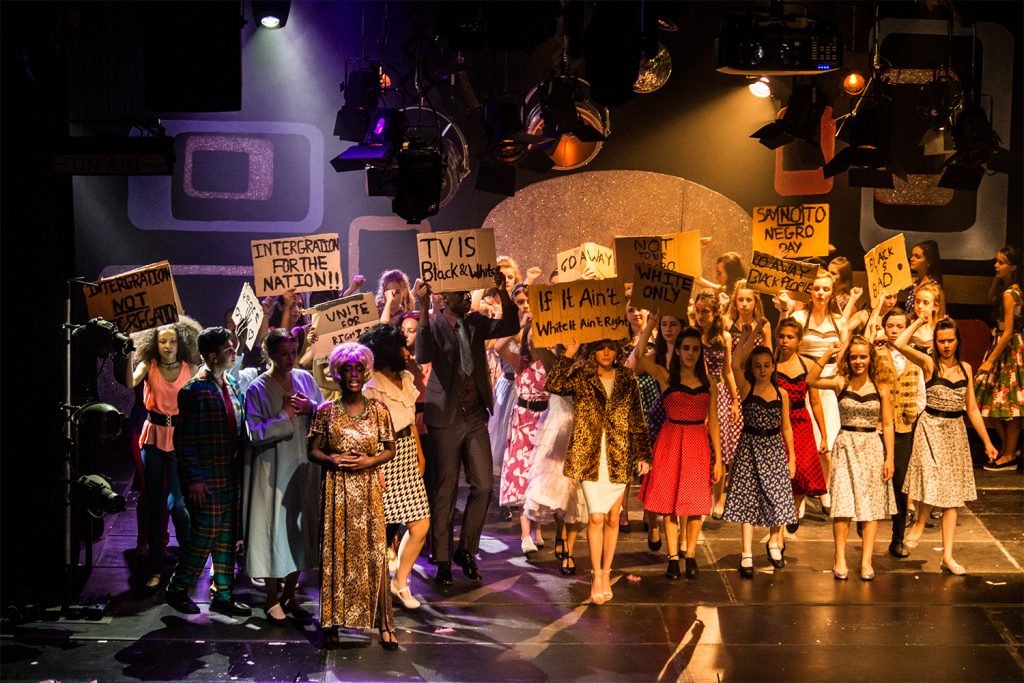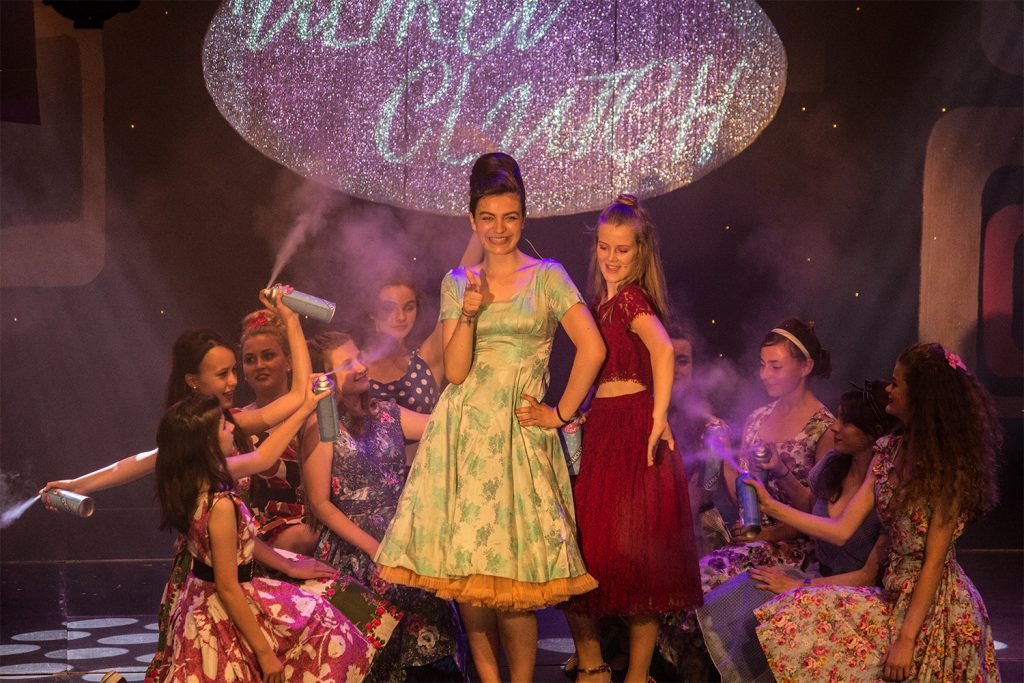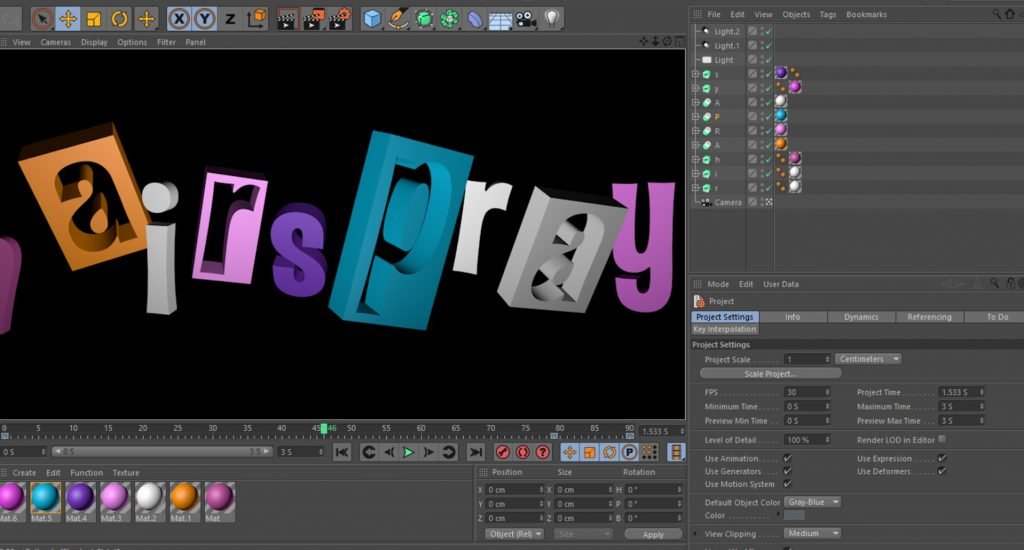HairSpray
One of the final productions I did at Twyford was hairspray. Instead of taking a direct focus on lighting, this time round I assisted with lighting design, along with the audio-visual side of the production, so video and sound effects.
A few weeks before the show week, I had begun making a few simple animations. At this stage it was unclear whether we were going to use projection for the show. I started making a simple hairspray logo animating in and out. Normally I would make a gobo which we could use to project the name onto the front curtains or stage, however this year a gobo wasn’t sort after. Ever since I’ve been seeing shows at Sadler’s Wells Theatre in London, this has been something I have always done. They normally show the name of the show on the front curtains before the show and it’s a great way to get people into the vibe for the production. To project the video, I used a Black Magic Ultra studio express connected to a Mac. The Ultra Studio express was then used to send video to a Black Magic ATEM Switch which then fed into the projector, all over HD-SDI. I ran into the ATEM switcher instead of going directly into the projector because I wanted a fail safe way to blank the projector and make sure that I could test video without it appearing on the screen on stage.


I was recommended by a colleague to use Resolume for this production however it did not meet my needs. I wanted a software which could control everything from sound effects and video, and be as automated as possible so that I could just hand it over to another colleague when I wasn’t there, and for them still to be able to use it. Because of these requirements I used QLAB 4 to help trigger and automate some of the cues. QLAB allowed me to easily change positions of the video to fit the screen, automate sound effects and make it so that images shown on screen were synced to certain bits of audio, for example pre-show announcements. In conjunction with QLAB I also used a plugin called QSpotify, which was created by Alec Sparks. QSpotify allows you to control Spotify from QLAB. In my case I used it to set the album which the audience walks into, automatically duck music when an announcement is played and fade and pause the music when the show started. This plugin meant that I had one Qlab file which would fire everything perfectly in sync with each other, and it means that the person operating video and sound effects only had to concentrate on one program, not two (QLAB and Spotify).

The main graphics shown on stage were, the preshow announcements graphics – so things like no photography or filming, etc ,The HairSpray logo for pre-show, interval and post-show and the ultra clutch logo. Originally I was thinking that we could just project onto a white projection panel and that would be fine, but as we were testing the projection it hit one of the background panels which had glitter on and it looked amazing. So the team decided that we would make a custom panel to the shape of the ultra clutch logo and have it glittered. In most of the videos I used block colours, which on a normal white panel would look a bit flat, however having the texture from the glitter meant that the block colours looked amazing. The videos were made using Cinema 4D and AfterEffects. I also made a custom design for the ultra clutch hair spray bottles which were Showtec Magican Haze. Since only the actors could read the bottle, I some funny information on the bottle to entertain them while they weren’t on stage.
Here is a short video showing the custom animations which were projected onto a glittery panel. During the intervals the HairSpray logo was projected and during The Corny Collins Show the Ultra Clutch Logo was projected.

